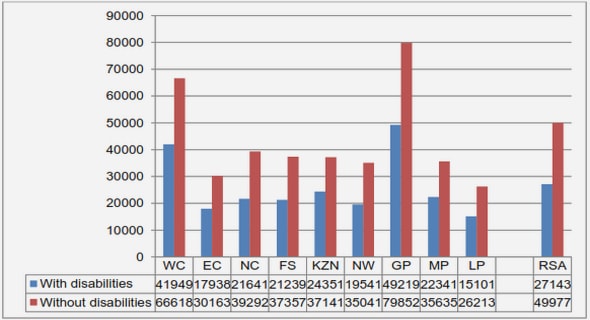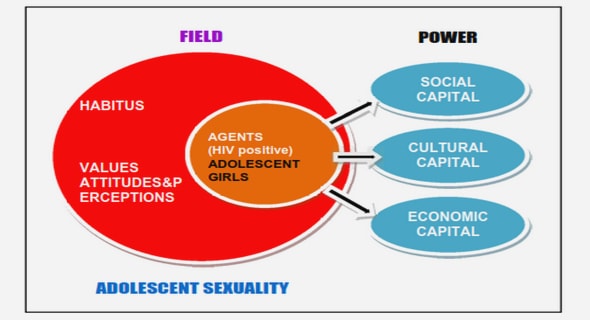Get Complete Project Material File(s) Now! »
CHAPTER 2 LITERATURE REVIEW
INTRODUCTION
The literature review with regard to cervical cancer screening is outlined in chapter 2. The guidelines on cervical cancer screening and the screening principles and practices are discussed. The impact of cervical cancer in different countries are presented including the perceptions of various racial groups towards cervical cancer screening. The barriers of cervical cancer screening are discussed to obtain information which contributes towards the low uptake of cervical cancer screening leading to the possible high death rate of cervical cancer screening. Cervical cancer screening practices and standardised performance are covered in relation to the primary health care package of South Africa. Information, education and communication and community mobilisation and awareness in cervical cancer and screening are included in this chapter. The theoretical framework (Donabedian quality of care) is discussed in this chapter.
Different nursing theories were outlined in the theoretical literature review to emphasise the need to care for women for the promotion of health and prevention of cervical cancer related deaths. The Charlotte Paul and Joan S. Reeves, Nightingale’s nursing theory’s four major concepts and Virginia Henderson’s nursing theory are discussed.
THEORETICAL FRAMEWORK FOR THE STUDY
The study is based on the Donabedian theory of quality care with reference to cervical cancer screening. Donabedian theory provides a framework for examining health services and evaluating quality of health care. The theory addressed the modification of structures and processes within health care delivery units to improve patient flow and information exchange (Donabedian model [S.a.]:1). The theory was applied in the study to evaluate quality of care in relation to the implementation of the National Cervical Cancer Screening Policy Guideline and the perceptions of women and professional nurses with regard to cervical cancer screening.
Meta-theoretical assumptions
The theoretical framework for the study is the Donabedian’s theory on quality care with reference to three categories: (1) structure (2) process and (3) the outcome.
Donabedian defined quality in terms of structure, processes and outcomes of care asserting that quality is the reflection of the values and goals of the healthcare system (Soter, Francesc, Kathleen, Stephen & Kerstin 2017:3). Donabedian proposed a model for assessing the quality of health services based on structure, processes and outcomes (Soter et al 2017:3).
Structure refers to the environment in which care is rendered and includes the human and material resources in the said environment. Human resource is concerned about for example, the staffing ratio per client, their qualifications, knowledge and skills. Material resources denote the facility and the equipment for providing quality care. Organisational structure incorporates medical and nursing staff, supervision, policies and performance reviews (Soter et al 2017:3).
Processes refer to what is actually done in rendering care. The activities of the professionals in rendering care which include the diagnosis, treatment, rehabilitation, education and preventive treatment. The model includes the activities of clients receiving care in process assessment. Areas of interest in the healthcare service such as barriers to achieving the set goal are noted in this model (Soter et al 2017:3).
Outcome refers to the desired quality of the health service resulting from the processes and the effects of the structure. Changes in health status include the knowledge, behaviour and satisfaction that the client has received from the service provided. Outcomes are effects of the quality of care on the client’s health and well-being as it reflects how skillfully it has been executed (Soter et al 2017:3). Therefore the three components of Donabedian’s model of quality care remain the foundation of this study.
Quality care is a basic human right worldwide and an integral part of health care. Delivery of quality health is non-negotiable in the public health facilities. Health facilities should do frequent assessment to track the level of quality of their service delivery and to strive to improve and satisfy their clients. Regular and consistent assessment of the cervical cancer screening should be done to ensure improvement of the quality of this service.
In the study, the researcher evaluated the quality of care with a focus on the clinic structure, the actual cervical cancer screening provided by each Professional nurse to women in a clinic, against the expectations of the cervical cancer screening policy. This was done by the researcher, checking the cervical cancer screening register whereby the number of clients screened per day were identified. The researcher checked whether the professional nurses providing this service have been trained on cervical cancer screening. The theory indicates that (process) commonly include diagnosis, treatment, preventive care, and patient education but may be expanded to include actions taken by the patients or their families. In the study, evaluation of quality care was done by checking the health education register and the content covered. This was observed in the recorded register and the cervical cancer screening results. Outcomes refer to the effects of healthcare on the health status of patients and populations including changes to health status, behaviour, or knowledge as well as patient satisfaction and health-related quality of life. The study therefore evaluates this aspect by the total number of clients screened and responses from women as participants through in-depth interviews.
Different nursing theories of care have been used in the study to explain and emphasise the importance of caring for women. According to the Primary health care package of the Department of Health, the baseline care of most of the clients is provided by the nurses and therefore expected to be provided intensively at the primary health care level by applying the four components of primary health care i.e. preventive, promotive, curative and rehabilitative. The baseline care at the primary health care level in the study is referred to, by the researcher as the primary health care.
The definition of primary health care was determined at the Alma-Ata as: “Primary health care as essential care based on practical, scientifically sound and socially acceptable methods and technology, made universally accessible to individuals and families in the community through their full participation and at a cost that the community and the country can afford to maintain at every stage of integral part both of the country’s health system, of which is the central function and main focus, and of the overall social and economic development of the community. It is the first level of contact of the individuals, the family and the community with the national health system, bringing health care as close as possible to where people live and work, and constitutes the first element of a continuing health care service” (Vasuthevan & Mthembu 2013:51).
Dreyer, Hatting and Lock (2007:135) indicate that, in the preventive promotive principle and primary health care, emphasis is currently being placed on promoting good health and preventing ill health. Dreyer et al (2007:135) further indicates that: “the health planning team, when planning a fully integrated coordinated comprehensive health care programme, needs to balance this principle with the needs for curative and rehabilitative health care. The health planning team should make provision for:
- Appropriate referral systems both horizontally and vertically
- Self-help approaches
- A partnership relationship between Government and the private sector
- Adequate support systems
- Education and developmental programme for all the major role players at operational level
Guidelines on cervical cancer screening
Objectives
The National Guidelines for Cervical Cancer screening Programme (2013:3), indicates the following objectives as aimed by the Government of South Africa: Reducing the incidence of carcinoma of cervix by detecting and treating the pre-invasive stage of the disease; Reducing the mortality and morbidity associated with cervical cancer and reducing the excessive expenditure of scarce health funds spend on invasive cancer of the cervix.
CHAPTER 1 ORIENTATION TO THE STUDY
1.1 INTRODUCTION
1.2 BACKGROUND INFORMATION ABOUT THE RESEARCH PROBLEM
1.3 STATEMENT OF THE RESEARCH PROBLEM .
1.4 RESEARCH AIM/PURPOSE
1.5 RESEARCH QUESTIONS
1.6 SIGNIFICANCE OF THE STUDY
1.7 DEFINITIONS OF KEY CONCEPTS
1.8 RESEARCH METHODOLOGY AND THE NATURE OF THE STUDY
1.9 ETHICAL CONSIDERATIONS
1.10 SCOPE AND LIMITATIONS
1.11 CONCLUSION
CHAPTER 2 LITERATURE REVIEW
2.1 INTRODUCTION
2.2 THEORETICAL FRAMEWORK FOR THE STUDY
2.3 WHAT IS CERVICAL CANCER?
2.4 THEORETICAL LITERATURE REVIEW
2.5 EMPERICAL LITERATURE REVIEW
2.6 CONCLUSION
CHAPTER 3 RESEARCH METHODOLOGY
3.1 INTRODUCTION
3.2 MIXED METHOD APPROACH
3.3 RESEARCH DESIGN
3.4 RESEARCH METHOD
3.5 THE RESEARCH PROCESS MODEL FOR THE STUDY
3.6 FRAMEWORK FOR MIXED METHOD DESIGN
3.7 SAMPLING
3.8 DATA COLLECTION
3.9 PHASES OF THE STUDY
3.10 ETHICAL CONSIDERATIONS
3.11 CONCLUSION
CHAPTER 4 PRESENTATION, DESCRIPTION AND ANALYSIS OF THE QUANTITATIVE RESEARCH RESULTS
4.1 INTRODUCTION
4.2 DATA MANAGEMENT AND ANALYSIS
4.3 RESEARCH RESULTS
4.4 OVERVIEW OF THE RESULTS
4.5 CONCLUSION
CHAPTER 5 DESCRIPTION AND ANALYSIS OF THE QUALITATIVE RESEARCH FINDINGS .
CHAPTER 6 INTEGRATION AND DISCUSSION OF THE QUANTITATIVE RESULTS AND QUALITATIVE FINDINGS
CHAPTER 7 .CONCLUSION, LIMITATIONS AND RECOMMENDATIONS
REFERENCES
GET THE COMPLETE PROJECT


